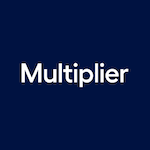Savings and checking accounts might seem similar on the surface, however, they have some major differences that many people tend to gloss over especially if they don’t work within the banking industry.
If you’ve always been confused about savings and current accounts – you’re in luck – because we’ve put together a short guide that will help you distinguish both types of accounts from each other.

What Is A Savings Account?
A savings account is a type of deposit account that entitles you to receive interest on the cash you maintain with the bank. It’s perfect for students and young adults because it helps earn interest on their money.
However, it’s important to note that the rate of interest you receive mainly hinges on the bank.
That’s because most banks don’t offer particularly high-interest rates, investing in high-yield savings accounts or accounts with special offers is usually one of the options to receive a good rate.
For instance, there are high yield savings accounts detailed in this Customers Bank review, offering impressive APY earnings of over 5%, along with an array of other perks and privileges. It’s simply a case of ensuring that you are eligible to receive the best rates on the available savings products.
Another option is to save with fintech companies like SoFi, which offer higher interest rates than conventional banks. So, consider opening a bank account online with SoFi.
Further, another benefit of a savings account apart from the interest is that they do not attract any fees to create or manage – in fact, with some financial institutions you don’t even need any money to open a savings account.
What Is A Checking Account?
Checking accounts, on the other hand, are deposit accounts that allow you to issue checks, utilize bank debit cards or check cards, and conduct digital transactions, eliminating the need to take fiat currency around with you – making having this kind of account beneficial.
One key advantage of a checking account is that money kept in it has coverage from the Federal Deposit Insurance Corporation (FDIC) – meaning if your bank collapses, you receive up to $250,000 of any amount in that account.
Differences Between A Checking And Savings Account
Although both checking and savings accounts are deposit accounts, they are intended to serve different purposes. Here’s a rundown of the main distinctions.
Features
Perhaps the first difference to highlight is their qualities. Direct deposits are accepted by both checking and savings accounts, and internet banking is available if the bank provides it. Also, you may move cash from your checking to your savings account at numerous banks.
However, an ATM card is usually included with checking accounts. Many, although not all, savings accounts have this option.
Limits on Withdrawals
Savings accounts have a restriction placed on them by the federal reserve known as Regulation D – which is a rule that limits the number of withdrawals from a savings account to six per month.
Checking accounts, on the other hand, are not subject to any government restrictions – however, some financial institutions impose a limit on the number of checks you may issue at a particular time.
Precondition of a Minimum Balance
To eliminate management costs, several financial institutions have minimum balance criteria. Based on the bank institution, the minimum balance required might be as little as $5 or as much as $25 or more.
Customers that fulfill additional conditions, such as paying a certain amount of direct deposits or connecting accounts within the bank, may be exempt from these costs.
Offering Interest
Interest is paid on all savings accounts, although not all checking accounts have this benefit.
The interest rates offered by online banks are often greater than those offered by traditional financial institutions – for example, the average interest rate per annum in traditional banks is 0.06%, however, online banks like SoFi offer up to 1.25%.










